A Closer Look: Blower Motor Resistor Operation
Blower Motor Resistor Operation
Blower Motor Resistors (BMR) control the electrical current flowing from the fan switch to the blower fan, which allows the motorist to set the fan at different speeds. The fan speed can be changed by switching the blower resistor resistance mechanically, using a rotating lever, or electronically, by the air conditioning system.

The blower motor resistor is responsible for controlling the blower motor speed. In the past, this was done by varying the voltage supplied to the blower motor. In later applications, the blower motor resistor is actually a solid-state module that sends a varied signal to the blower motor.
The traditional blower motor resistor is connected to ground, and wired in series with the blower motor assembly. Blower motor resistors have several resistors with different resistances. This controls the current that runs through the blower motor. Each fan speed selection is connected to one or more of the resistors in the blower resistor assembly. The change in resistance controls the current through the blower motor, which in turn limits the speed that the blower motor spins at. When high speed is requested, the blower motor resistor is bypassed and the blower motor ground circuit is connected directly to ground. This allows maximum current through the blower motor and maximum speed occurs.
Typical Blower Motor and Resistor Wiring
Reminder: Before you start testing, get the wiring diagrams and system operation for the blower motor and resistor for the vehicle application.
Testing Tips
-
Use service information to get the specific testing procedures and resistance values for ohm-testing the resistor itself
-
Verify power to blower motor
-
Verify the main ground to switch and resistor
-
Verify that the ground passes through each resistor pin to each pin at the switch and blower motor
-
With the resistor unplugged, verify that power makes it through the switch to resistor terminals
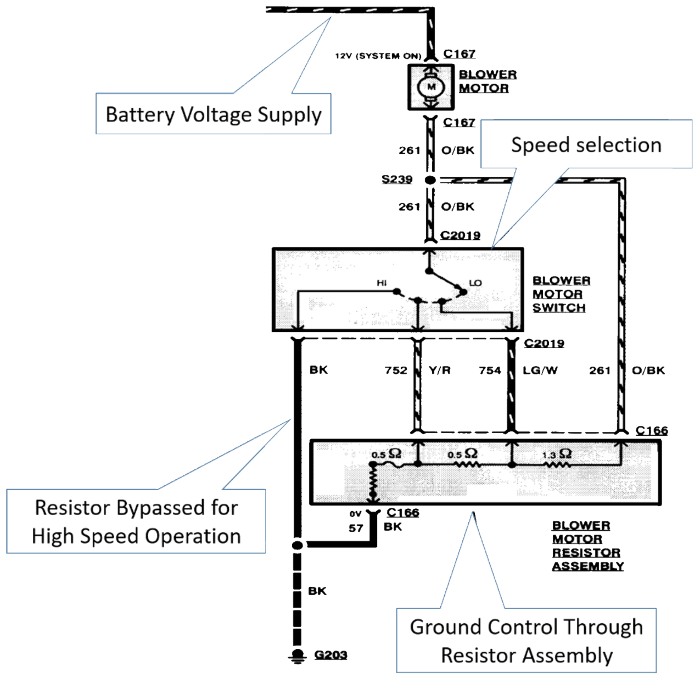
Power Tip
The blower motor resistor produces heat when in operation. This is why the resistors are located in the path of the blower motor airflow, as it provides cooling. If the blower motor is operated with the resistor assembly removed from its location, it will likely cause the blower motor resistor to fail. Excessive blower motor amperage due to a faulty blower motor or restricted cabin air filter should also be considered or possibly replaced to prevent repeat failures.

More recently, blower motor speeds are controlled using different methods. Most manufacturers have moved from simple resistor circuits to electronic control modules and solid-state controls.
The following guidelines are provided to help understand how blower motor speeds are controlled and how blower motor control circuits are tested. Refer to service information for the specific vehicle you are working on.
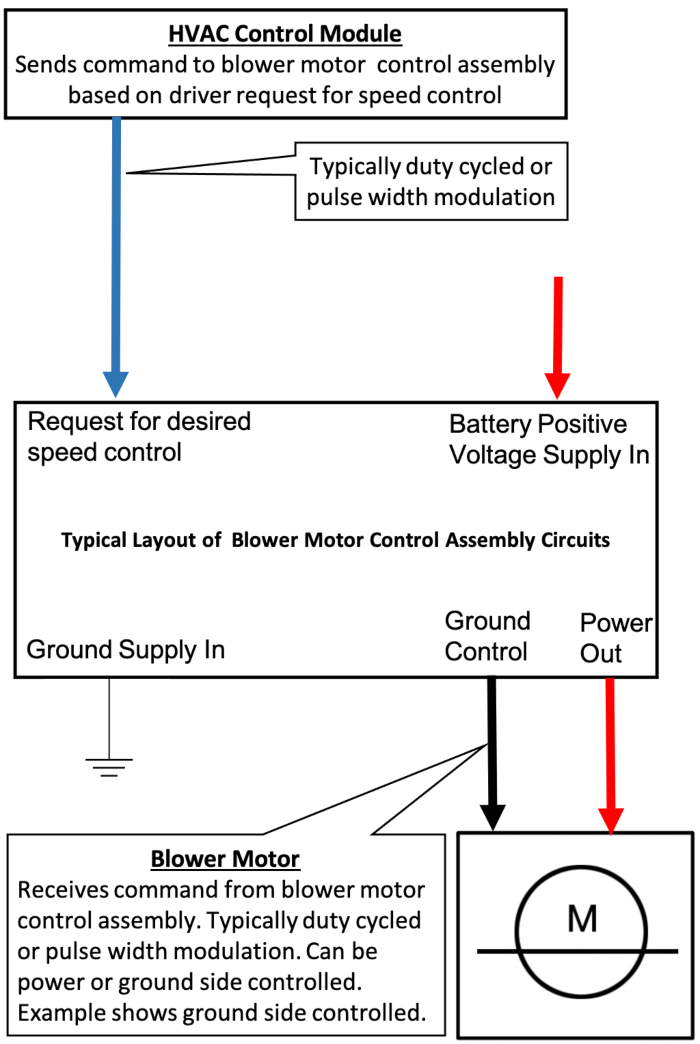
Use an inductive amp clamp to verify that the blower motor current draw is not excessive. Worn out blower motors can cause excessive current. If the current is too high, replace the blower motor. This excessive amperage will cause the new blower motor control assembly to fail again. A guideline number for maximum amperage on high speed is approximately 15 to 20 amps. Specific vehicle application information should be verified.
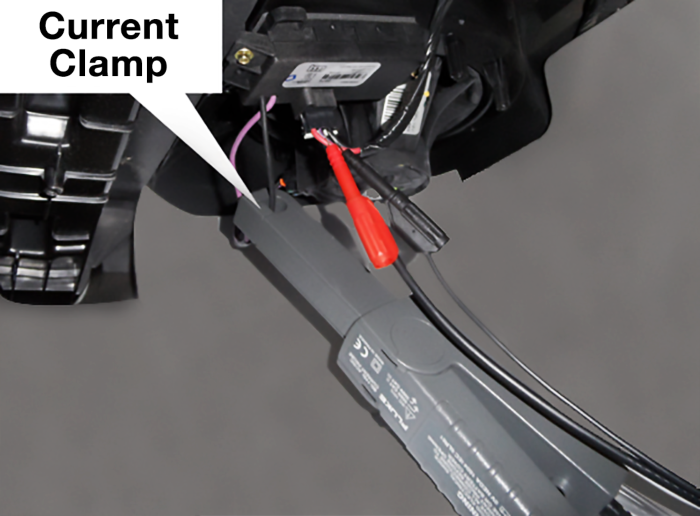
Power Tip
Possible repeat failure typically occurs during testing, when we are looking to verify if our diagnosis is correct. It happens when the currently installed or newly to-be-installed blower motor control assembly is operated without being completely installed in its proper location. The air flow created by the blower motor past the heat sink is used to help keep the electronic components inside of the blower control assembly from overheating. This failure may occur instantly or create a comeback sometime later.
It is equally important that there is airflow in the vehicle itself to keep the blower motor control assembly from overheating. Always inspect the cabin air filter.
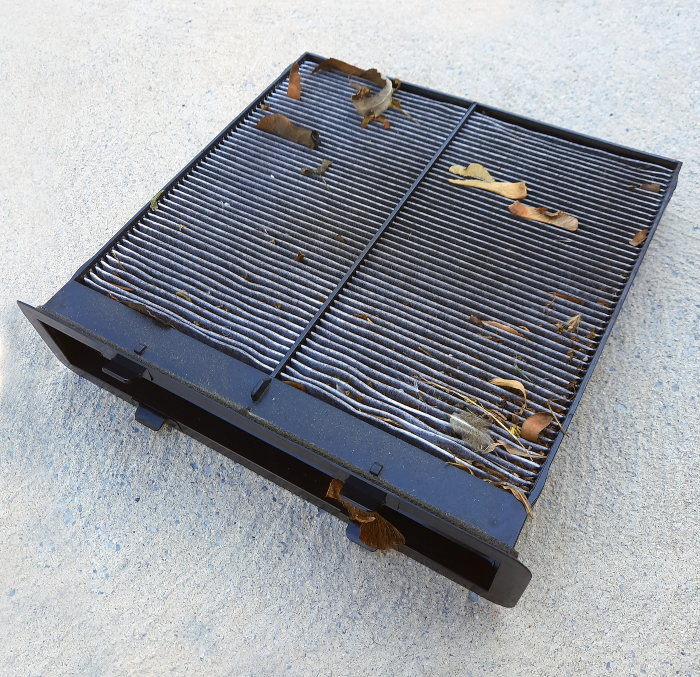
Power Tip
In addition to checking blower motor current draw, the mating connector should also be inspected for signs of damage caused by excess heat.
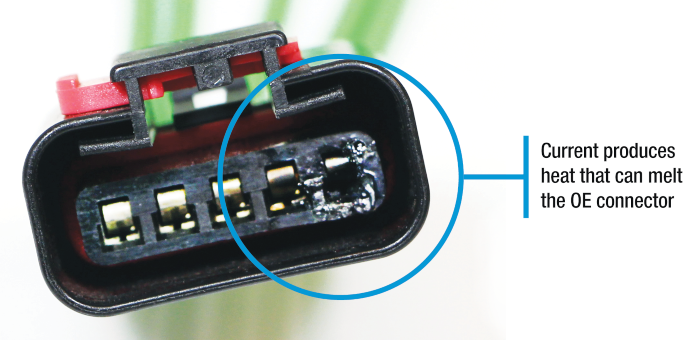
Due to technological advancements on today’s automotive heating and cooling systems, blower motor resistors have high amounts of current running through their connectors. As a result, the current produces heat that can melt the connector and resistor. Worn OE blower motors can create a demand for current that also damages the resistor or module. The excess current melts the wiring and plastic shroud, damaging the interface pins on the controller’s circuit board.
The Blue Streak® Solution: Standard® Blue Streak® Blower Motor Resistor Kits feature problem-solving high-temp connectors.
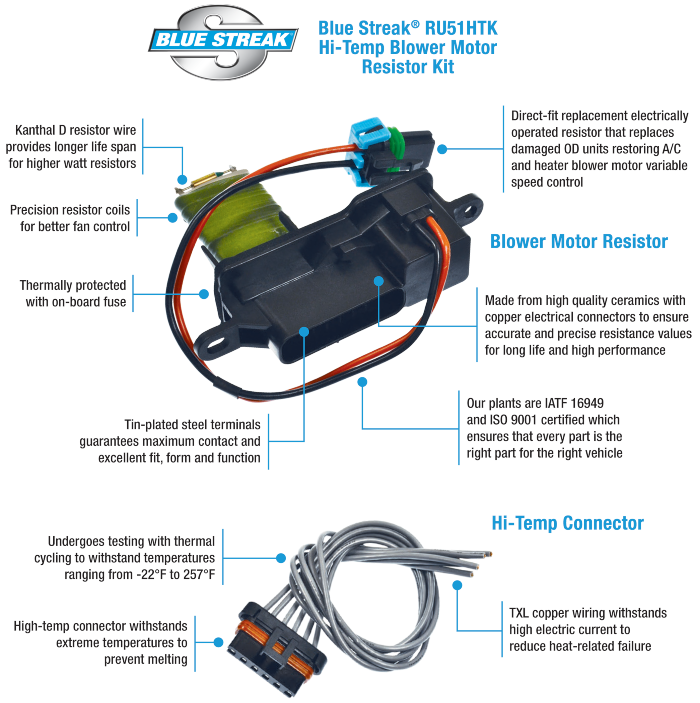
Standard® Blue Streak® premium Blower Motor Resistor Kits are a high-quality solution for melted connectors and blower motor resistors. Blue Streak® engineers improved on the OE design to create a connector that withstands the excessive heat and protects against future failure.
Blue Streak® connectors undergo thermal cycling testing to withstand extreme temperatures to prevent melting. Blue Streak® blower motor resistors are direct-fit replacements and engineered to withstand the high levels of current that can melt the resistor or connector.
Standard® and Blue Streak® – The Complete Blower Motor Resistor Program
Manufactured in IATF 16949-certified North American facilities, Standard® engineers sample-test every blower motor resistor for draw, resistance and RPM to precisely match the OE specs and meet or exceed the OE for durability. Performance is examined at all speeds, followed by 48-hour load tests. That’s how Standard® ensures their blower motor resistors will operate at peak performance and deliver a long service life under all operating conditions.
With more than 750 blower motor resistors in the line, Standard® BMRs use the highest-quality components that match the original for fit, form and function – while Blue Streak® hi-temp BMR kits feature problem-solving connectors engineered to withstand excessive heat and prevent melting common to the original.
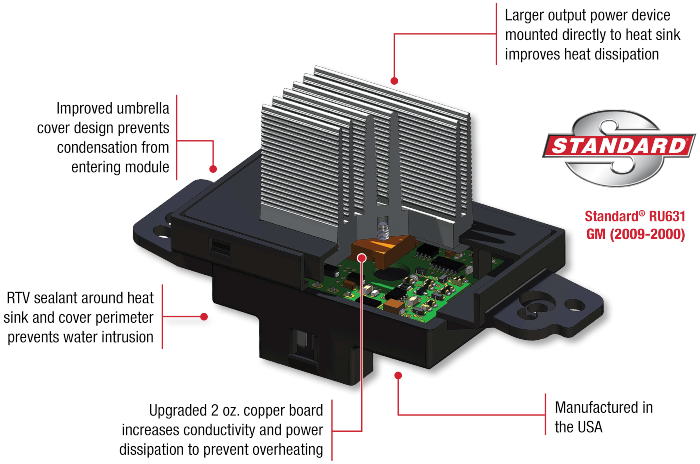
Next time a customer calls and asks for a blower motor resistor, help them avoid a repeat failure and recommend that they purchase a high-quality Standard® Blower Motor Resistor or a Blue Streak® Blower Motor Resistor Kit to do the job right.
Explore the Standard® advantage at BlueStreakBMRK.com.
Check out Standard Pro Training: Diagnosing Blower Motors and Resistors.
Watch more Standard® videos: Blower Motor Replacement Tips and A Closer Look: Blue Streak Blower Motor Resistor Kits.
